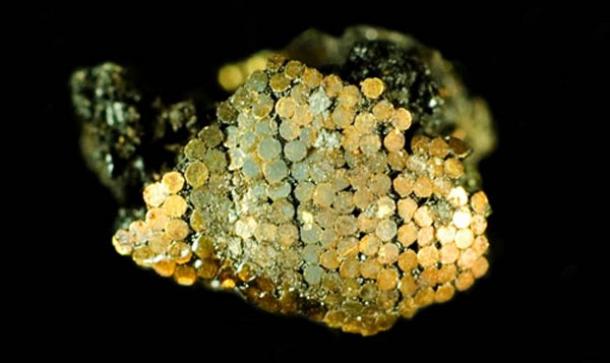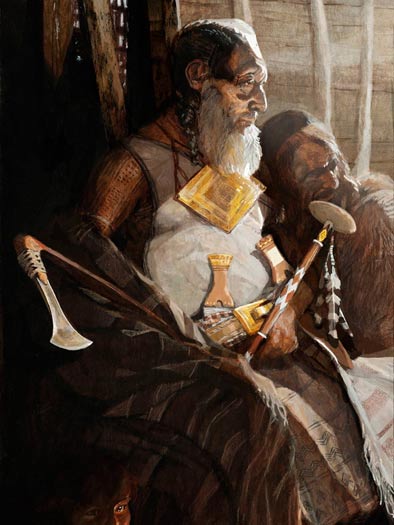
In 1808, William Cunnington, one of Britain's earliest professional archaeologists, discovered what has become known as the crown jewels of the 'King of Stonehenge'. They were found within a large Bronze Age burial mound just ½ mile from Stonehenge, known today as Bush Barrow. Within the 4,000-year-old barrow, Cunnington found ornate jewellery, a gold lozenge that fastened his cloak, and an intricately decorated dagger.
"The very finest gold work involved the making and positioning of literally tens of thousands of tiny individually-made components, each around a millimetre long and around a fifth of a millimetre wide," said David Dawson, Director of the Wiltshire Museum in Devizes where the micro-gold working achievements are on permanent display.
A report in The Independent explained the amazing process involved in creating the handle of just one dagger, adorned with up to 140,000 tiny gold studs just a third of a millimetre wide. The first stage involved manufacturing extremely fine gold wire, just a little thicker than a human hair. The end of the wire was then flattened to create a stud-head, and was then cut with a very sharp flint or obsidian razor, just a millimetre below the head. This delicate procedure was then repeated literarily tens of thousands of times.
"Next, a tiny bronze awl with an extremely fine point was used to create minute holes in the dagger handle in which to position the studs," wrote The Independent. "Then a thin layer of tree resin was rubbed over the surface as an adhesive to keep the studs in place. Each stud was then carefully placed into its miniscule hole - probably with the help of a very fine pair of bone or wooden tweezers, because the studs are too small to have been placed in position directly by the artisan's fingers."
Read full article here.




Comment: Why is it that archaeologists of the mainstream ilk always projects ancients as brutes with primitive to no technology, as in 'they must have been myopic'. Most ancient technology has been lost to cataclysms and archives of 'forbidden history', but still optical technology made from crystals isn't that far of a stretch.
See also: New digital map reveals hidden archaeology of Stonehenge